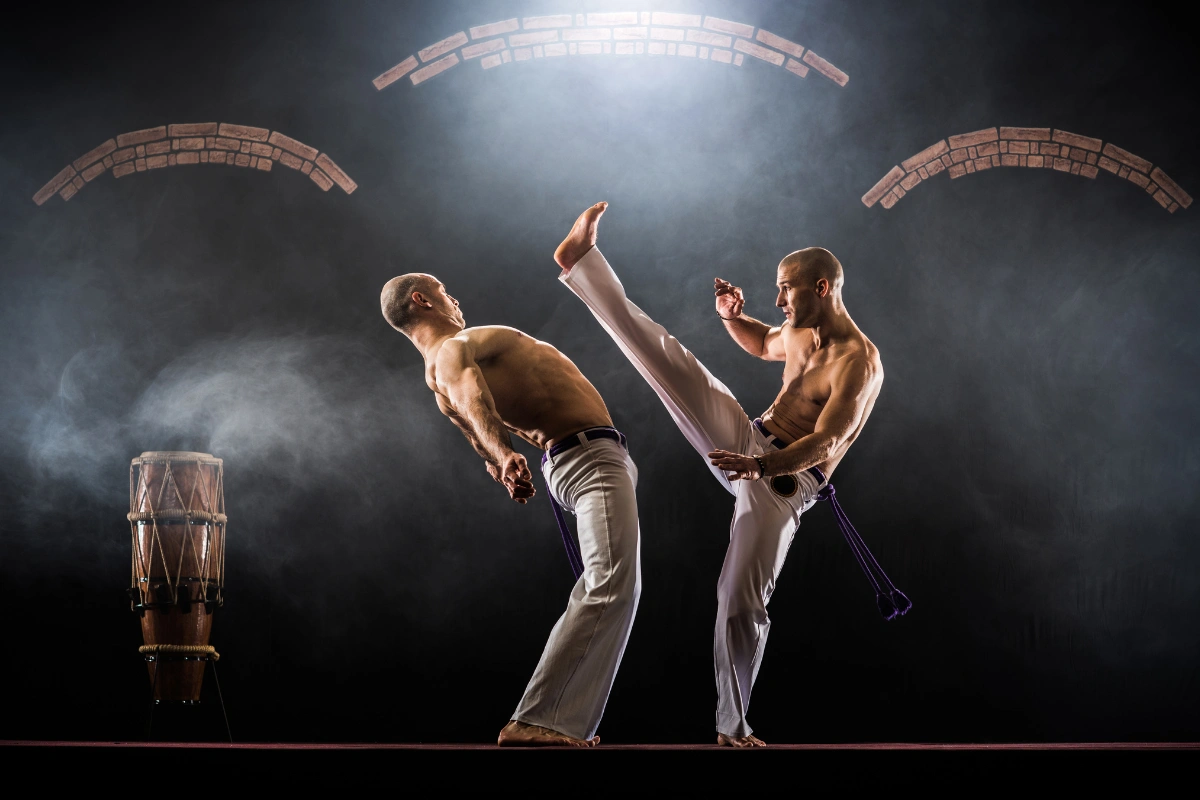Capoeira is a Brazilian martial art that combines elements of dance, acrobatics, music, and self-defense. It is characterized by its fluid movements, rhythmic music, and cultural significance, making it a unique and dynamic practice. Here’s a detailed overview of capoeira:
- Origins: Capoeira originated among African slaves in Brazil during the 16th century. It was developed as a form of self-defense and a way to preserve cultural traditions, often disguised as a dance to avoid detection by slave masters.
- Cultural Significance: Capoeira is deeply rooted in Afro-Brazilian culture and has strong ties to the history and struggles of enslaved people in Brazil. It serves as a means of cultural expression, community bonding, and resistance against oppression.
- Movement and Techniques:
- Ginga: The foundational movement in capoeira, characterized by a rhythmic swaying motion that helps practitioners maintain balance, mobility, and flow. Ginga is essential for transitioning between offensive and defensive moves.
- Kicks and Acrobatic Moves: Capoeira incorporates various kicks, spins, and acrobatic movements, such as cartwheels and flips. These techniques allow practitioners to evade attacks while delivering strikes.
- Defense and Counterattacks: While capoeira is often seen as a dance, it is also a martial art focused on self-defense. Practitioners use evasive maneuvers and counters to respond to their opponents’ movements.

- Music and Instruments: Music is an integral part of capoeira, setting the rhythm and mood for the practice. Common instruments include:
- Berimbau: A single-string percussion instrument that provides the primary rhythm for capoeira games. It is essential for signaling different tempos and styles.
- Atabaque: A large drum that adds depth and resonance to the music.
- Pandeiro: A hand frame drum that provides additional percussion and rhythm.
Read more here: DETAIL INFORMATION ABOUT CAPOEIRA – YOU MAY NOT KNOW

Leave a reply